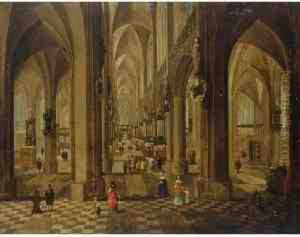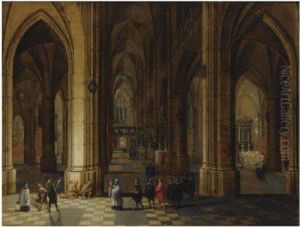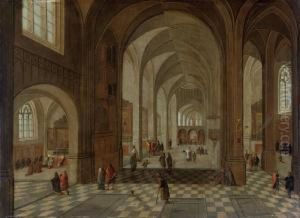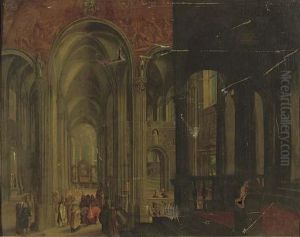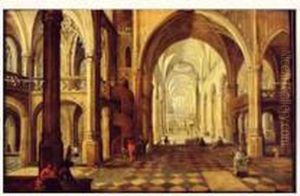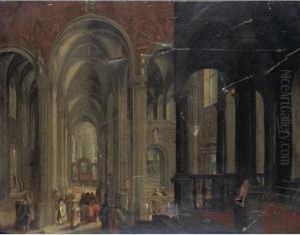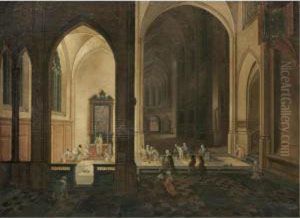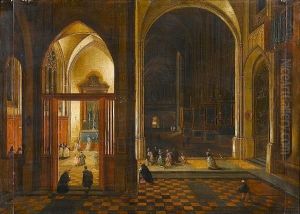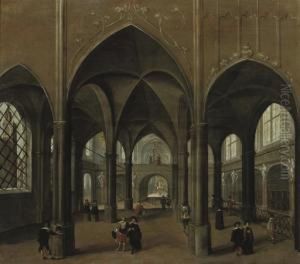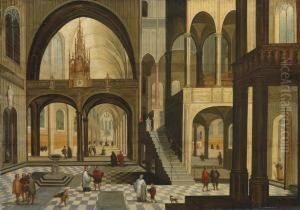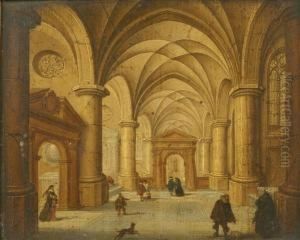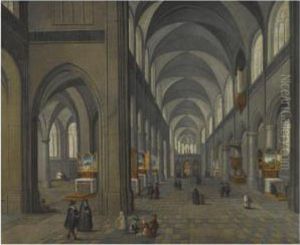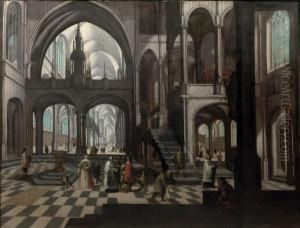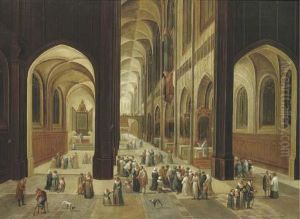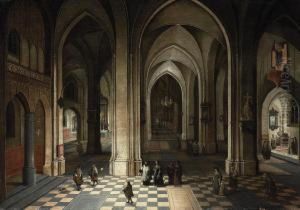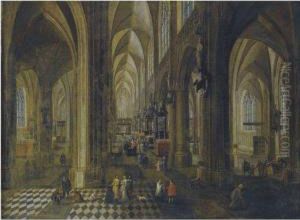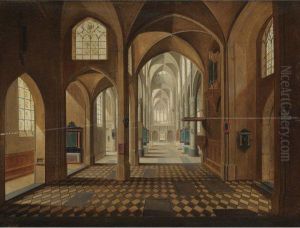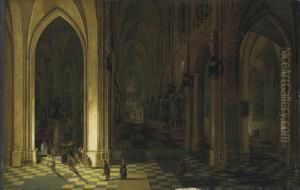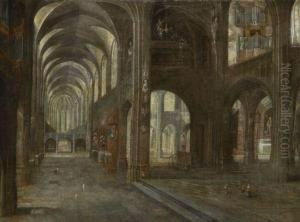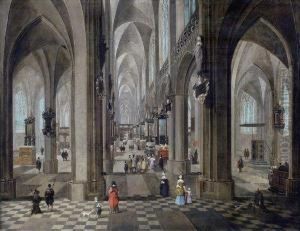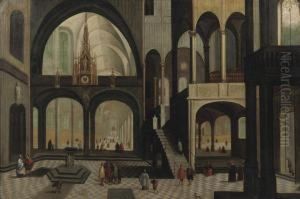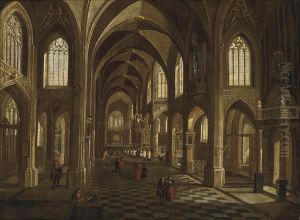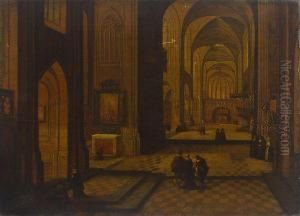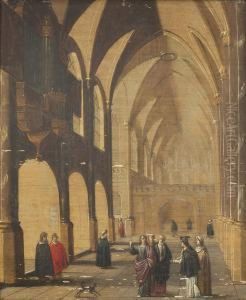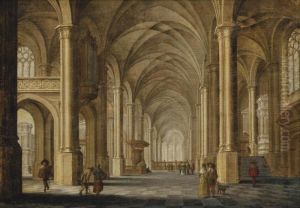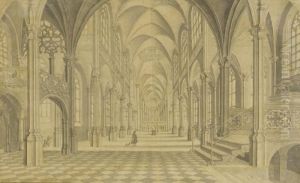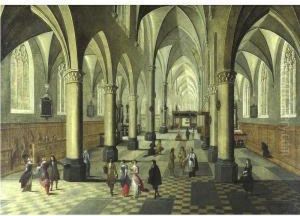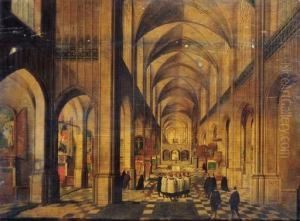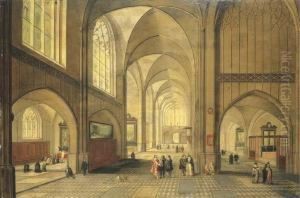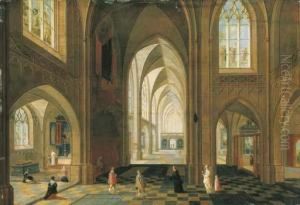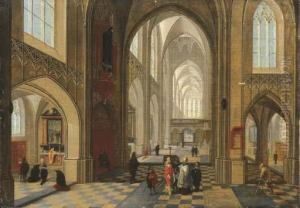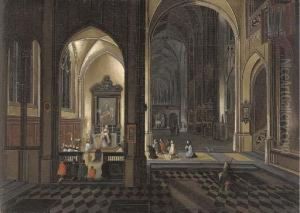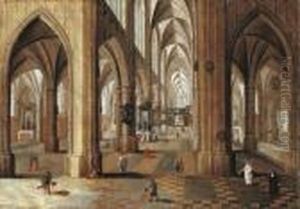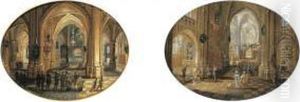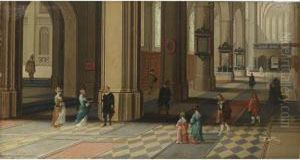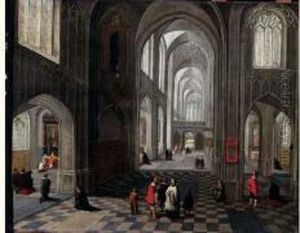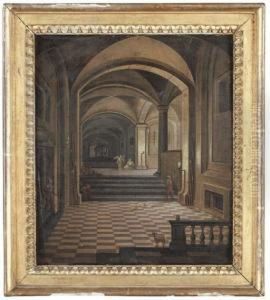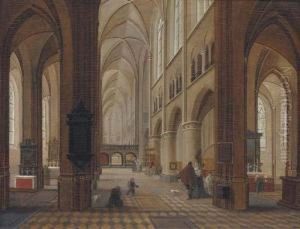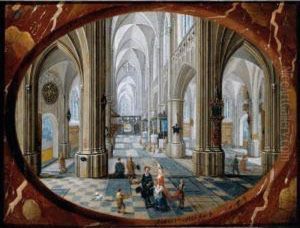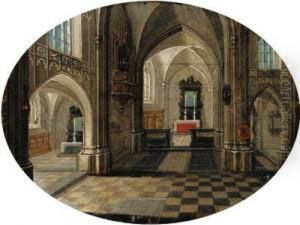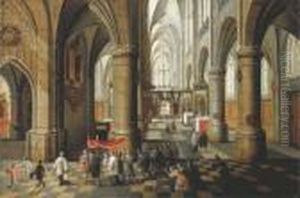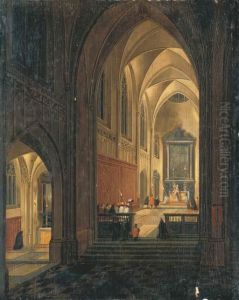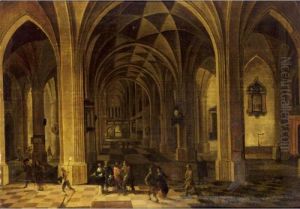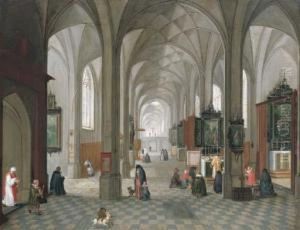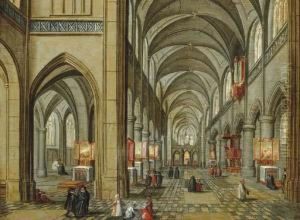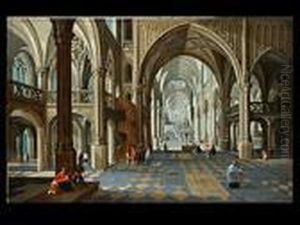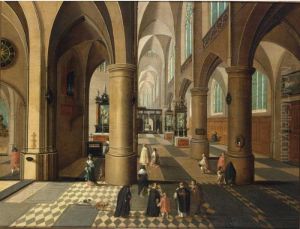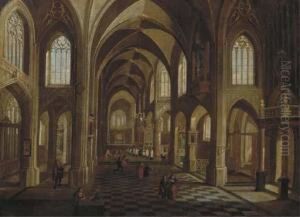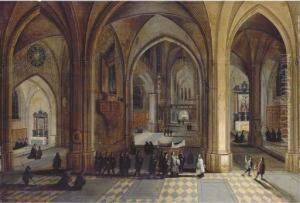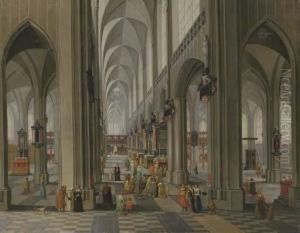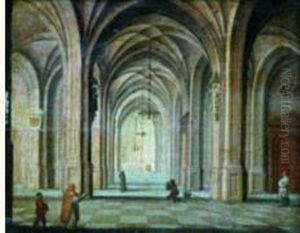Pieter Ii Neefs Paintings
Pieter Neefs the Younger was a Flemish painter known for his distinctive contribution to the genre of church interior paintings, a niche that was particularly popular in the 17th century in the Netherlands. Born around 1620 in Antwerp, then part of the Spanish Netherlands, he was the son of Pieter Neefs the Elder, who was also a notable painter of church interiors. Under the strong influence of his father's work and the Antwerp school of painting, Pieter II developed his own artistic style while adhering to the family tradition.
Neefs the Younger often collaborated with other artists of his time. It was a common practice that he would paint the architectural elements, and figures would be added by other painters, such as David Teniers the Younger, a renowned Flemish artist known for his genre scenes and landscapes. Neefs' work is characterized by meticulous attention to detail, the use of perspective to enhance the sense of depth, and a masterful handling of light and shadow to evoke a tranquil and reverent atmosphere within the ecclesiastical settings.
Despite the similarities in subject matter with his father’s work, Pieter II began to incorporate his own innovations into his paintings. He tended to create a softer and warmer atmosphere, with a more romanticized portrayal of light filtering through the church’s windows. His works often depicted the interiors of the Antwerp Cathedral and other local churches, capturing the grandeur and solemnity of the Baroque architecture.
Pieter II Neefs' career spanned several decades, and his paintings were sought after not just in Flanders but also by collectors across Europe. However, unlike his father, there is less documented information about his life, and his works are sometimes overshadowed by those of Pieter Neefs the Elder. The exact date of his death is not known, but it is believed that he was still alive in 1675, as indicated by the date on one of his last known works. His legacy continues through the appreciation of his art, which remains on display in museums and collections, showcasing the serene beauty of Flemish ecclesiastical architecture.
